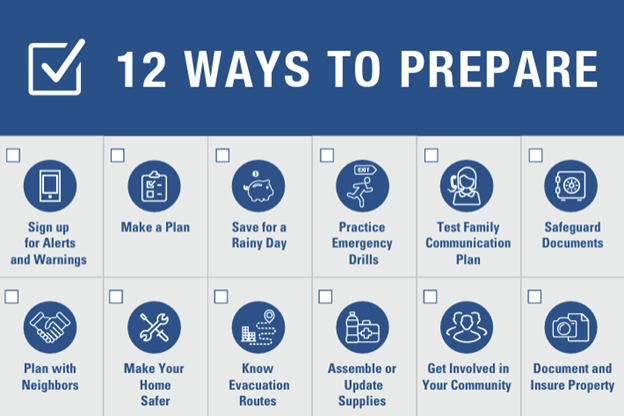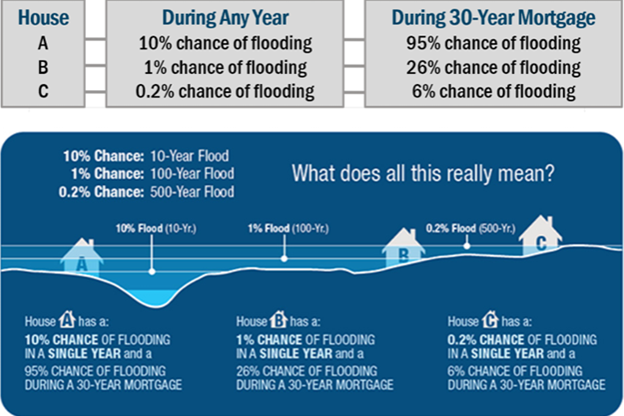 Flooding is the country’s most common and costly natural disaster in the US and can potentially affect everyone and every property. Make a plan for your household, including your pets, so that you and your family know what to do, where to go, and what you will need to protect yourself from flooding.
Flooding is the country’s most common and costly natural disaster in the US and can potentially affect everyone and every property. Make a plan for your household, including your pets, so that you and your family know what to do, where to go, and what you will need to protect yourself from flooding.
Did you know?
More than 1 in 5 flood insurance claims come from properties outside of high-risk areas.
R: Reduce Your Risk
Reducing risk can be accomplished a variety of ways, from small projects to larger renovations. Some smaller projects to help reduce flooding include keeping downspouts clear, report clogged storm drains to Public Works, install a sump pump in basements or areas that are prone to collect water, seal your foundation, and use landscaping for water control.
For renovations or new construction: Elevate structures and mechanical systems above the base flood elevation, if possible. Construct using flood-resistant materials, especially in basements or lower levels. Consult the Town of Wake Forest Engineering Department to discuss floodplain development rules before beginning construction.
For more information on reducing your risk, visit FEMA’s Protect Your Property From Flooding.
 I: Insure Your Risk
I: Insure Your Risk
If flooding occurs, having insurance for your home or business property is the best way to ensure you will have the necessary financial resources to help your repair, rebuild, or replace whatever is damaged. Before a disaster occurs, take the time to document and insure your property.
Renters, homeowners, and business owners can buy coverage through the NFIP or private providers.
S: Share Information on Risk
Discuss with your neighbors and community members about flood risk by sharing knowledge and resources. Urge community members to find their flood zone and explain the importance of flood insurance. Ask others if they have an emergency plan and are opted-in to receiving emergency alerts. Share this disaster checklist with others so they can log their important records for easy access during an emergency.
 K: Know Your Risk
K: Know Your Risk
There are multiple tools available to help Wake Forest residents and business owners understand local flood risk:
NC Emergency Management Flood Risk Information System (FRIS): Enter your address and find your flood zone and what your zone’s risk is, flood source, base flood elevation, and more.
FEMA Flood Map Service Center Enter your address to see if your property is in a high-risk flood zone. To learn more about Flood Zones, visit FEMA Flood Maps and Zones Explained.
FEMA National Risk Index: Use the NRI to review Wake and Franklin Counties vulnerability and resilience index for different types of natural disasters.
Town of Wake Forest Floodplain Manager: If you need help understanding your flood risk or what permits you may need because of your flood zones, please contact Jessica Watkins.

